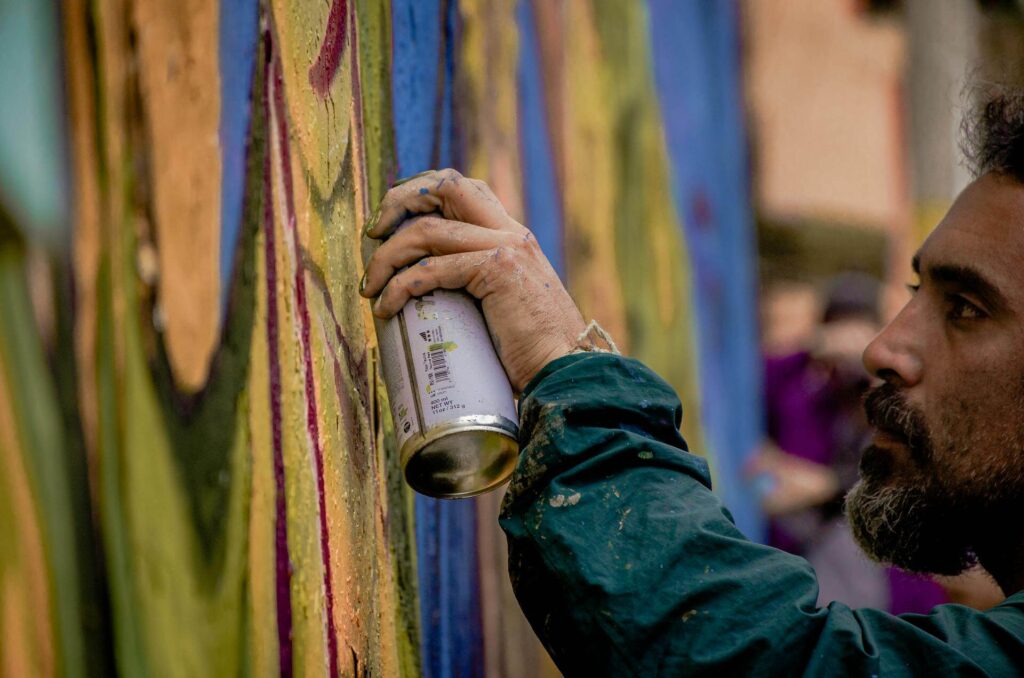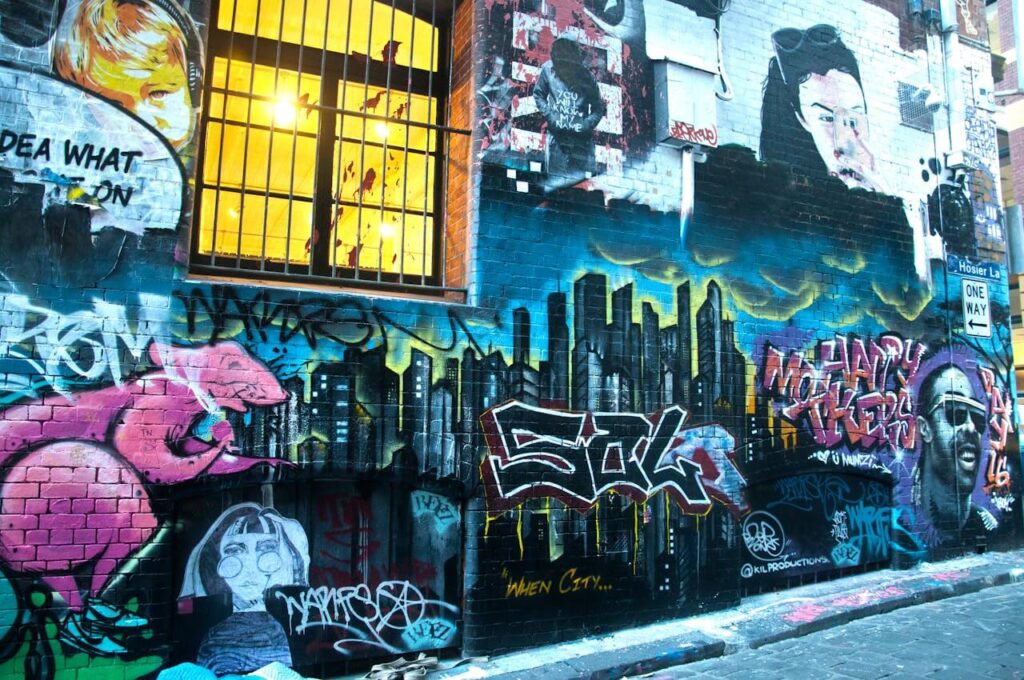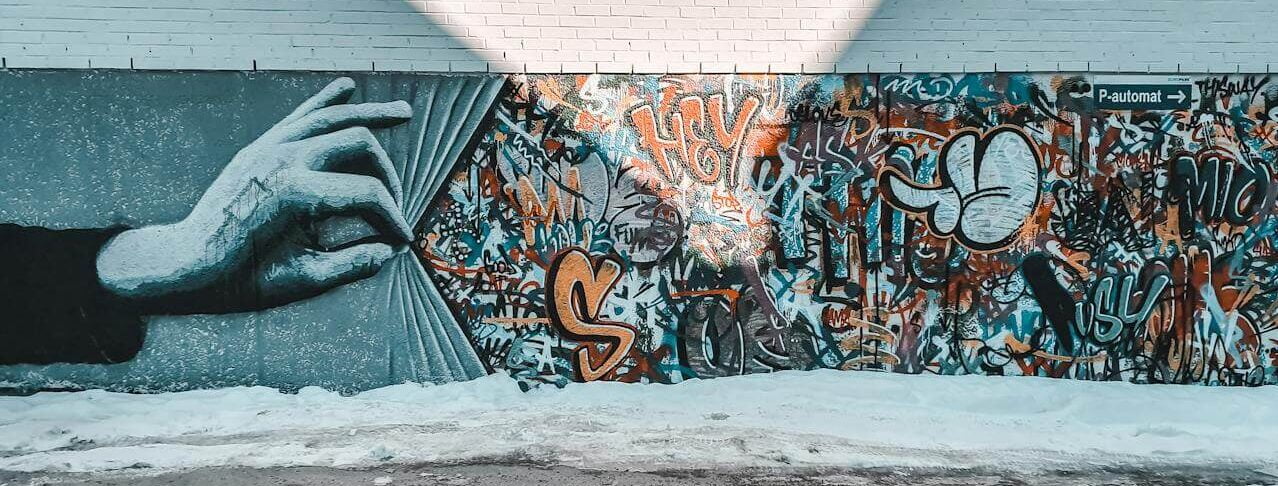Street art has transcended its origins from graffiti on urban walls to a globally recognized art form. This vibrant and dynamic genre has captivated audiences with its bold statements, unique aesthetics, and ability to transform public spaces. In this blog post, we delve into the essence of street art, exploring its history, cultural significance, notable artists, and its impact on communities worldwide.
Table of Contents
- The Roots of Street Art
- The Cultural Significance of Street Art
- Icons of Street Art
- Street Art and Community Engagement
- The Future of Street Art
The Roots of Street Art
Street art’s journey began in the 1960s and 70s, intertwined with the rise of graffiti culture in cities like New York and Philadelphia. Pioneers like Cornbread and TAKI 183 tagged their names on buildings, subway cars, and public spaces, sparking a movement that would grow into a diverse and influential art form.
While graffiti focused primarily on tagging and letter-based designs, street art expanded the scope to include murals, stencils, stickers, and installations. Artists like Jean-Michel Basquiat and Keith Haring bridged the gap between street and gallery, bringing street art into mainstream recognition.

The Cultural Significance of Street Art
Street art is more than just visual appeal; it’s a powerful tool for social and political commentary. Artists use urban landscapes as their canvases to express views on issues like inequality, freedom, and environmental concerns. The immediacy and accessibility of street art allow it to reach a broad audience, often provoking thought and dialogue.
In many communities, street art has played a pivotal role in reclaiming neglected spaces. Murals and installations breathe new life into rundown areas, fostering a sense of identity and pride among residents. This transformation can lead to increased tourism, economic development, and a strengthened community spirit.
Icons of Street Art
The street art world is adorned with numerous iconic figures who have left indelible marks on the urban canvas. Here are a few notable artists:
- Banksy: Perhaps the most enigmatic and influential street artist, Banksy’s satirical and subversive pieces have garnered international acclaim. His works often carry strong political messages, challenging societal norms and injustices.
- Shepard Fairey: Known for his “Obey Giant” campaign and the iconic “Hope” poster of Barack Obama, Fairey’s work blends street art with graphic design, creating powerful visual statements.
- JR: This French artist uses large-scale photographs to create thought-provoking installations. His “Inside Out Project” encourages people worldwide to share their stories through public art.

Street Art and Community Engagement
Street art’s impact extends beyond aesthetics; it’s a catalyst for community engagement and activism. Many artists collaborate with local communities to create works that reflect their stories and struggles. Projects like Philadelphia’s Mural Arts Program and Brazil’s Favela Painting initiative demonstrate how street art can empower communities and promote social change.
Moreover, street art festivals and events, such as Art Basel Miami Beach and the Upfest in Bristol, bring together artists and audiences, fostering a global community of street art enthusiasts. These gatherings celebrate creativity, promote cultural exchange, and provide platforms for emerging artists to showcase their talents.
The Future of Street Art
As street art continues to evolve, it embraces new mediums and technologies. Digital art, augmented reality, and interactive installations are expanding the boundaries of traditional street art, creating immersive experiences for audiences. The rise of social media has also amplified the reach and impact of street art, allowing artists to share their work with a global audience instantly.
However, challenges remain, including issues of legality, commercialization, and the preservation of street art. As cities grapple with these concerns, the dialogue between artists, authorities, and communities becomes crucial in shaping the future of street art.
Conclusion

Street art is a vibrant, ever-evolving art form that reflects the pulse of urban life. Its ability to inspire, provoke, and transform makes it a powerful force in the contemporary art world. As we move forward, the continued collaboration and innovation within the street art community will ensure its enduring legacy and influence.
Whether it’s a striking mural in a bustling city or a subtle stencil on a hidden corner, street art invites us to pause, reflect, and engage with the world around us. It’s a testament to the creativity and resilience of artists who see the urban landscape not just as a backdrop but as a canvas full of possibilities.





